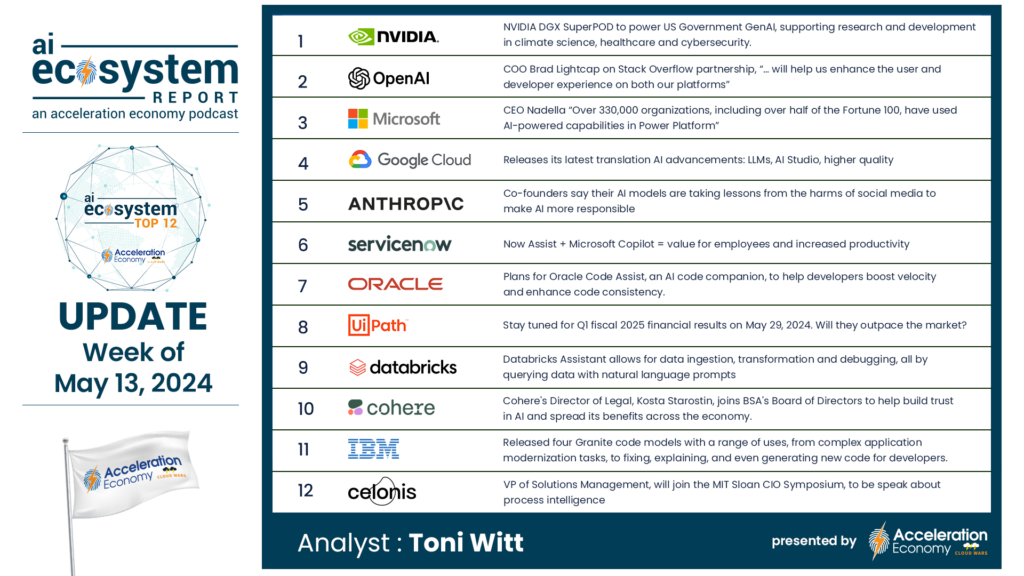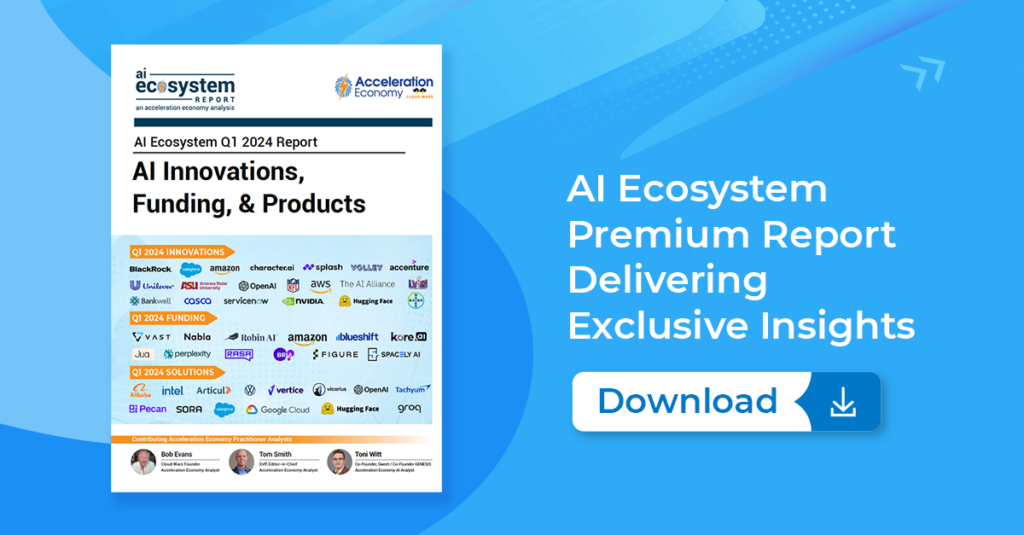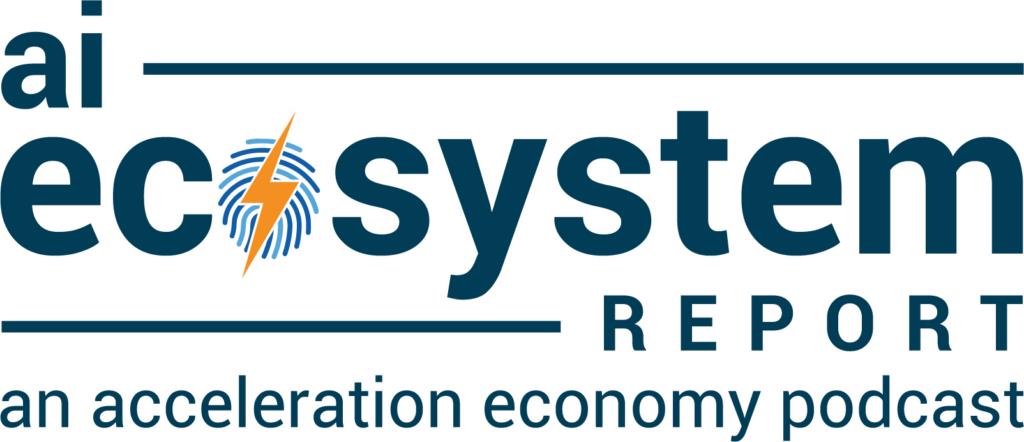Welcome to the AI Ecosystem Report, featuring practitioner analyst and entrepreneur Toni Witt. This series is intended to deliver the timely intelligence about artificial intelligence (AI) you need to get up to speed for an upcoming client engagement or board meeting.

Highlights
Innovation (00:50)

The Biden Administration issued an executive order regarding AI safety and advancement last year. Now, the White House has published the status of key action items, breaking down an agenda regarding AI that the executive order raised when it was issued. The release outlined four key pillars:
- Managing risks to safety and security: A couple of efforts for this pillar include the launch of the AI Safety and Security Board, a GenAI risk document open to public comment, the development of the first AI safety and security guidelines for critical data and infrastructure owners and operators, and the DoD piloting tools to spot vulnerabilities in government software systems.
- Standing up for workers, consumers, and civil rights: Guidelines have been created for employers, specifically those that receive federal funding, to comply with worker protection laws, especially around employment rights for federal contractors. Also established: guidelines in the housing market around tenant screening and for AI use within healthcare.
- Harnessing AI for good: The Department of Energy announced funding opportunities for projects advancing AI with energy-efficient algorithms. The energy sector and regional governments are meeting to break down the use of AI, how it impacts the grid, and how AI can be applied to make the grid more sustainable and efficient.
- Bringing AI talent into government: Various talent programs are spinning up in the General Services Administration, while a new cohort of Presidential Innovations Fellows are being onboarded. Homeland Security launched the Homeland Security AI Corps. Since Biden signed this executive order, federal agencies have hired over 150 AI and AI-enabling professionals.
Funding (04:58)

California-based AI startup Blaize secured $106 million in additional funding. As an AI chip startup, Blaize has developed its Blaize 1600 chip on which the company claims it can run neural networks with better power efficiency than its rivals. With its low power usage, this product is ideal for edge use cases.
Mercedes-Benz, one of the world’s biggest consumers of chips, is one of the companies funding this startup. With expectations now for cars to have built-in computer components, and moving into the age of self-driving cars, they need to have quality AI-specific hardware and software to run computer vision algorithms. Nowadays, that can dictate how good the driving experience is.
The funding will mostly be used for expanding Blaize’s presence in the automotive sector as well as computer vision and GenAI segments.
Solution of the Week (07:35)

Apple released a research paper about its MM1 chip. Apple plans to embed this proprietary LLM across its ecosystem of products. This research is coming at a time when Siri has been facing pressure, as it doesn’t perform at the level of competitors like ChatGPT.
MM1 is intended to be a high-performing multimodal LLM that can understand both text and images and translate between the two elements. The research demonstrates the capabilities of MM1, including image captioning, answering questions, and referencing images. The largest form of the model is 30 billion parameters.

The AI Ecosystem Q1 2024 Report compiles the innovations, funding, and products highlighted in AI Ecosystem Reports from the first quarter of 2024. Download now for perspectives on the companies, investments, innovations, and solutions shaping the future of AI.










